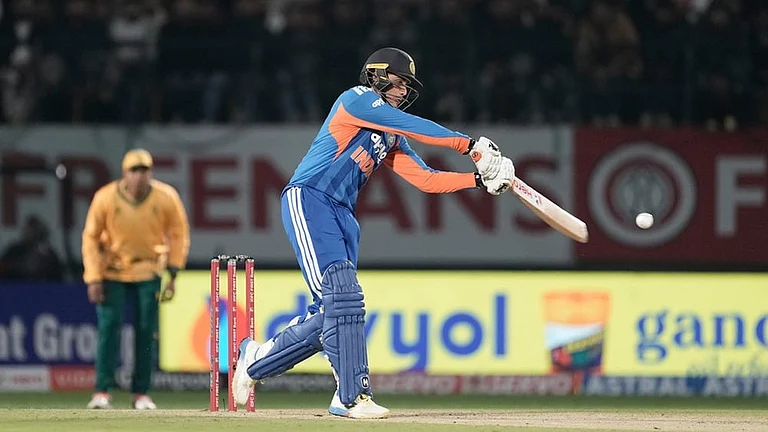
Mouthing Off Gift Horses
My previous visit to Venice had been heartbreaking. In 2007, for the first time, the Venice Biennale offered India an official country pavilion—a coveted prize at the world’s most prestigious art extravaganza. National capitals lobby tooth and nail to get in. But in India’s case, the curator flew to Delhi to make the offer. Our then culture secretary responded: “Why should we participate? Anyway, please come through the proper channels.” (I swear I’m not making this up!). People I met in Venice that year were open-mouthed about Delhi’s stupidity. So I can be excused for believing that it would take another 116 years (that’s how old the Biennale is) before our babus wake up to the importance of culture in creating a compelling national image (nuclear bombs and nine per cent growth aren’t enough!). But I had overlooked something—throughout history, Venice, with its Virgin Mary cult, has been known as ‘the city of miracles’.
That the miracle happened this year is thanks to two people: Lalit Kala Akademi chairman Ashok Vajpayee and culture secretary Jawahar Sircar. Money was quickly sanctioned, Ranjit Hoskote was appointed curator, and Sudhakar Sharma became the commissioner. The India pavilion was inaugurated at the magnificently derelict 12th century Venetian docks, the Arsenale, at 11.30 am on June 3. Despite some last-minute hiccups, the buzz at the opening sounded a historic moment—no matter what the cynics might say. The show will go on till November 27.
Hoskote has called the show ‘Everyone Agrees: It’s About to Explode’. It’s a good title, suggestive of the very different kinds of energies that have been unleashed in India today. His choice of artists is unusual too: New York-based Zarina Hashmi, the Desire Machine Collective from the Northeast, Calcutta/Amsterdam’s Praneet Soi and Kerala/Delhi’s Gigi Scaria. Hoskote has wisely steered clear of the pitfalls of making a ‘nationally representative show’. All four artists speak in distinctive voices. Contrary to its title though, the show, as someone put it, comes across as “elegant, beautiful and understated”. In a straw poll I conducted, 90 per cent responded to the show positively, with the Italians identifying most with Zarina’s minimalist creations. After struggling all her life, this 74-year-old artist has finally got the recognition she deserves.
The Cosa Nostra Have Better Taste
Venice is also the city of spectacle. To make some kind of impact at the Biennale, a country pavilion has to be dramatic, like Germany’s, which won the Golden Lion. The drama though can be taken too far. The Italian pavilion, intriguingly titled ‘Art is Not the Mafia’, looked like an overcrowded mafia warehouse, crammed to the ceiling with all manner of art—good, bad and crap. One exhibit consisted of giant polyurethane thrones on which sat a man and a blonde woman, stark naked. A loudspeaker blared: “Attenzione! Do not touch the artworks!” The lady had perfectly rounded silicone breasts. I stepped up to ‘interview’ her (aah, the pleasures of being a reporter!). She scribbled in my notebook: “Vittoria Risi/Italian Pornstar.” It all made sense when I learned that the curator is a close friend of Italian prime minister Silvio Berlusconi, he of the bunga-bunga parties. Nepotism or simply artistic recognition?
Fruits of an Arab Spring
The biggest discovery in Venice this year is Arab art. In previous Biennales, Egypt’s would, by far, be the worst pavilion. This time around, the same culture ministry has sent a powerful video by Ahmed Basiouny, a young artist slain by a sniper’s bullet at Tahrir Square. Saudi Arabia has set up an attractive multimedia installation by two sisters from, of all places, Mecca. The most impressive pavilion, it must be said, is Iraq’s—a deeply moving lament from a land devastated by war. Bangladesh marked its maiden Biennale with a pavilion full of bold though not exceptional work. Sadly, none of its artists chose to focus on the reality around their pavilion. As a great city-state, Venice has historically been a place of refuge—for Greek or Turk, Jew or homosexual. It’s the turn of Bangladeshi youths now, ubiquitous along the canals as vendors of tourist bric-a-brac. I asked if anyone had struck it rich yet. One has, playing the lottery. “Afraid of being killed, he’s gone home,” I was told. “He’ll get € 10,000 (Rs 6.5 lakh) every month for the next 30 years.”
An Oddly Timed Permanency
The Indian pavilion is a temporary one, only for this year’s Biennale. In 2007, I’d heard that China had lobbied hard for a permanent space. Could India also do the same? It seemed too much to hope for. But miracles, it seems, come in pairs. After the inauguration, the Biennale offered India a permanent pavilion—an offer that was accepted. The cost? Rs 15 crore for 20 years for both the art and architecture Biennales held in alternate years. I said a silent prayer to Santa Maria: “Let not the PMO, the most blinkered on culture we’ve ever had, overrule it. Let the spirit of our ancestors, who recognised the glory of Venice, prevail.”









_.jpg?auto=format%2Ccompress&fit=max&format=webp&w=768&dpr=1.0)












